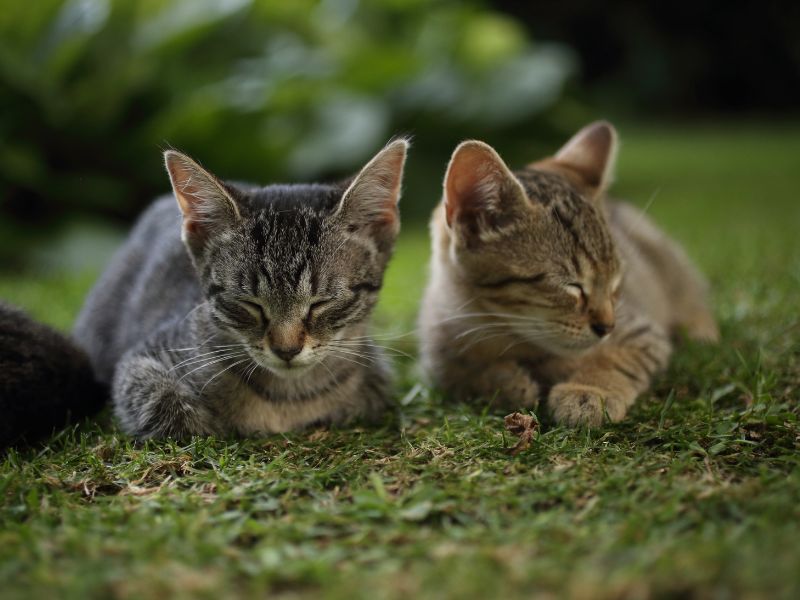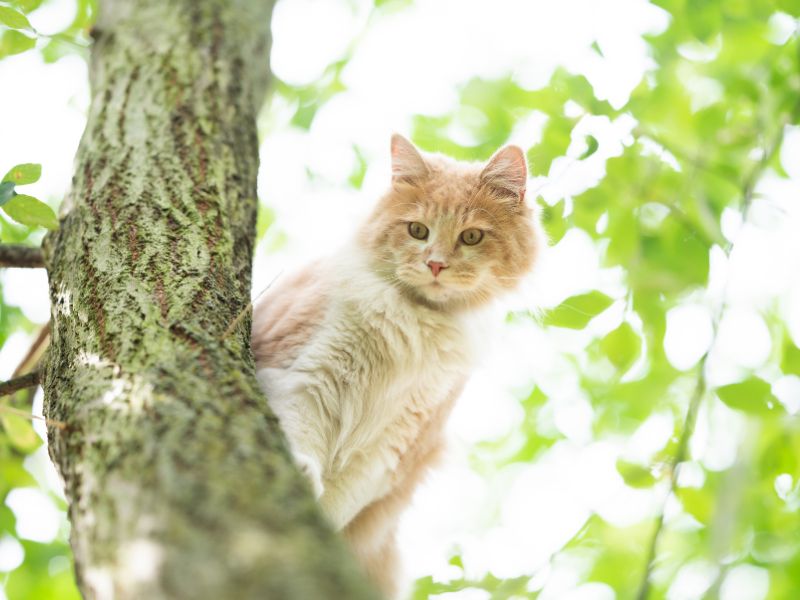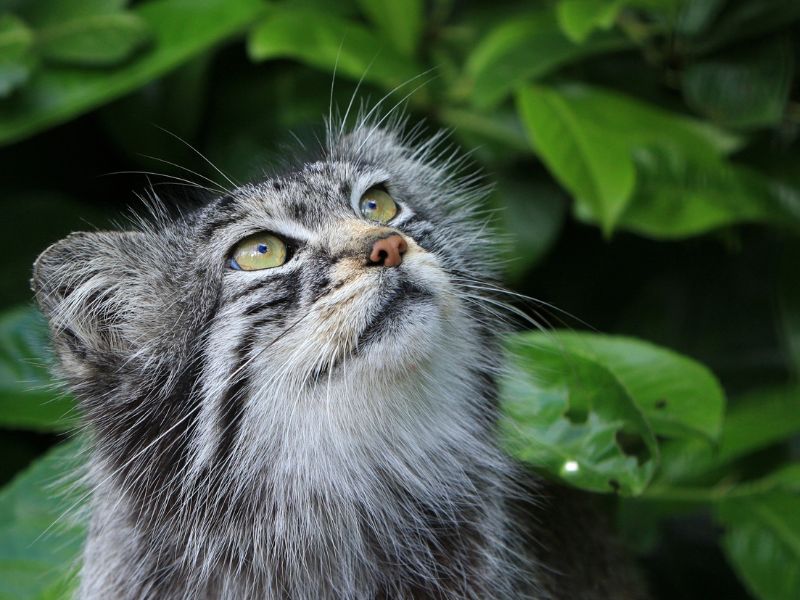As a cat owner, you know how much your feline friend loves to explore the outdoors. However, traditional gardens can be a minefield of dangers for cats, such as toxic plants and sharp objects. That’s why creating a cat-friendly garden is crucial to ensure your pet’s safety and well-being while still enjoying the beauty of nature. In this article, we will guide you through some helpful tips and tricks to create a cat-friendly garden that your pet will love.
Why Create a Cat-Friendly Garden?
Cat-friendly gardens are not only safe and enjoyable for your pets, but they also have many benefits for you as a cat owner. By providing a safe outdoor space for your cat, you can reduce their stress and anxiety levels, prevent boredom, and improve their overall health and well-being. A cat-friendly garden also allows your cat to exercise, play and explore, which is essential for their physical and mental health. Moreover, a well-designed cat-friendly garden can enhance your outdoor living space and add value to your property.
Understanding Your Cat’s Behavior
Before you start planning your cat-friendly garden, it’s essential to understand your cat’s behavior and preferences. Cats are natural climbers, scratchers, and hunters, so they need a garden that allows them to express these instincts. They also love to bask in the sun, hide in cozy spots, and explore new scents and textures. Therefore, your cat-friendly garden should have plenty of vertical spaces, hiding spots, and sensory stimulation.

Cat-Friendly Plants and Flowers to Include in Your Garden
One of the most crucial aspects of creating a cat-friendly garden is choosing the right plants and flowers that are safe for your pets. Some plants can be toxic to cats and cause severe health problems, such as vomiting, diarrhea, and even death. Therefore, it’s important to do your research and only include plants that are non-toxic and safe for your furry friends. Here are some cat-friendly plants and flowers that you can include in your garden:
Catnip
Catnip is a herb that is safe and non-toxic for cats. It contains a chemical called nepetalactone, which triggers a euphoric response in cats and can make them playful and happy. You can grow catnip in your garden, or you can buy dried catnip leaves and sprinkle them on your cat’s toys or scratching posts.
Cat Grass
Cat grass is a type of grass that is safe for cats to eat and helps with their digestion. It’s easy to grow and provides your cat with a natural source of fiber, vitamins, and minerals. You can grow cat grass in pots or trays, and your cat can nibble on it whenever they feel like it.
Spider Plant
Spider plants are non-toxic and safe for cats, and they also provide a fun and interactive plaything for your furry friend. Cats love to bat at the long, thin leaves of spider plants, which can provide them with hours of entertainment.
Jasmine
Jasmine is a fragrant plant that is safe for cats and can add a lovely scent to your garden. Cats love to rub against the leaves and inhale the sweet fragrance, which can have a calming effect on them.
Rosemary
Rosemary is a herb that is safe for cats and can add a delicious flavor to your cooking. It also has natural flea-repelling properties, which can help keep your cat healthy and comfortable.
Plants to Avoid in a Cat-Friendly Garden
While there are many plants and flowers that are safe for cats, there are also some that can be toxic and should be avoided. Here are some plants that are toxic to cats and should not be included in your cat-friendly garden:
Lilies
Lilies are highly toxic to cats and can cause severe kidney damage or even death if ingested. All parts of the plant, including the flowers, leaves, stems, and pollen, are poisonous to cats. Therefore, it’s crucial to avoid planting lilies in your garden or bringing them into your home if you have a cat.
Daffodils
Daffodils contain a toxic chemical called lycorine, which can cause vomiting, diarrhea, and even convulsions if ingested by cats. All parts of the plant are poisonous, including the bulbs, flowers, leaves, and stems. Therefore, it’s best to avoid planting daffodils in your garden or keeping them inside your home.
Azaleas
Azaleas contain a toxic chemical called grayanotoxin, which can cause vomiting, diarrhea, and even death if ingested by cats. All parts of the plant, including the flowers, leaves, stems, and nectar, are poisonous to cats. Therefore, it’s essential to avoid planting azaleas in your garden or bringing them into your home.

Designing Your Cat-Friendly Garden
Once you have chosen the right plants and flowers for your cat-friendly garden, it’s time to start designing it. A well-designed cat-friendly garden should provide your cat with plenty of opportunities to climb, scratch, play, and relax. Here are some tips for designing your cat-friendly garden:
Create Vertical Spaces
Cats love to climb and perch on high places, so it’s important to provide them with plenty of vertical spaces in your garden. You can install cat shelves, cat trees, or catwalks that allow your cat to climb and explore at different heights.
Provide Hiding Spots
Cats love to hide in cozy spots and observe the world around them. You can create hiding spots in your garden by adding plants, shrubs, or garden ornaments that provide cover and privacy. You can also create a cat cave or a cat house that your furry friend can retreat to when they need some alone time.
Install Cat-Friendly Pathways
Cats love to walk on different surfaces and textures, so it’s essential to provide them with cat-friendly pathways in your garden. You can use paving stones, pebbles, or bark chips to create different pathways that your cat can explore. You can also create a cat-friendly maze or a catwalk that allows your cat to navigate around the garden.
Add Stimulating Features
Cats love to play and explore, so it’s important to add stimulating features to your cat-friendly garden. You can create a cat garden with different textures and scents that your cat can explore. You can also add a cat fountain, a butterfly garden, or a bird feeder that provides your cat with hours of entertainment.
Creating Safe and Stimulating Garden Features for Your Cat
In addition to designing a cat-friendly garden, you can also create safe and stimulating garden features that are specifically tailored to your cat’s needs. Here are some DIY cat-friendly garden projects that you can try:
DIY Cat Scratching Post
A DIY cat scratching post is an easy and fun project that provides your cat with a safe and stimulating place to scratch. You can make a scratching post using a cardboard tube, sisal rope, and a wooden base.
DIY Cat Garden
A DIY cat garden is a project that allows you to create a customized outdoor space for your furry friend. You can use a raised garden bed, pots, or containers to grow cat-friendly plants and flowers that your cat can explore.
DIY Cat Walkway
A DIY cat walkway is a project that allows you to create a safe and stimulating pathway for your cat to navigate around your garden. You can use wooden planks and brackets to create a catwalk that is elevated off the ground and provides your cat with a bird’s eye view of their surroundings.

See Also: How to Keep Your Cat Healthy and Happy
And: How to Make Your Own Cat Toys with Household Items
Tips for Maintaining Your Cat-Friendly Garden
Maintaining a cat-friendly garden requires some effort, but it’s worth it to ensure your furry friend’s well-being. Here are some tips for maintaining your cat-friendly garden:
Regularly Check for Toxic Plants
Regularly check your garden for any toxic plants that may be harmful to your cat. If you notice any toxic plants, remove them immediately and replace them with cat-friendly alternatives.
Keep Your Garden Clean and Tidy
Keep your garden clean and tidy by removing any sharp objects, debris, or litter that may harm your cat. Regularly sweep and rake your garden to keep it free of leaves and twigs.
Provide Fresh Water and Food
Provide your cat with fresh water and food in your garden, especially if they spend a lot of time outside. You can install a cat fountain or a bird bath that provides your cat with fresh drinking water. You can also create a feeding station that is protected from the elements and other animals.
Frequently Asked Questions About Cat-Friendly Gardens
Q: Are cacti safe for cats?
A: Cacti are not toxic to cats, but their spines can cause injury or irritation if ingested or touched. Therefore, it’s best to avoid planting cacti in your cat-friendly garden.
Q: Can I use mulch in my cat-friendly garden?
A: Yes, you can use mulch in your cat-friendly garden, but it’s important to choose a non-toxic and safe type of mulch. Avoid using cocoa bean mulch, which can be toxic to cats if ingested.
Q: Can I plant catnip indoors?
A: Yes, you can grow catnip indoors in pots or containers. Catnip is a great way to provide your cat with a natural source of stimulation and entertainment.
Conclusion
Creating a cat-friendly garden is a fun and rewarding project that provides your furry friend with a safe and stimulating outdoor space. By choosing the right plants, creating stimulating features, and designing safe pathways, you can create a garden that your cat will love. Remember to regularly check for toxic plants, keep your garden clean and tidy, and provide your cat with fresh water and food. With these tips and tricks, your cat-friendly garden will be a purrfect paradise for your furry friend to explore and relax.

